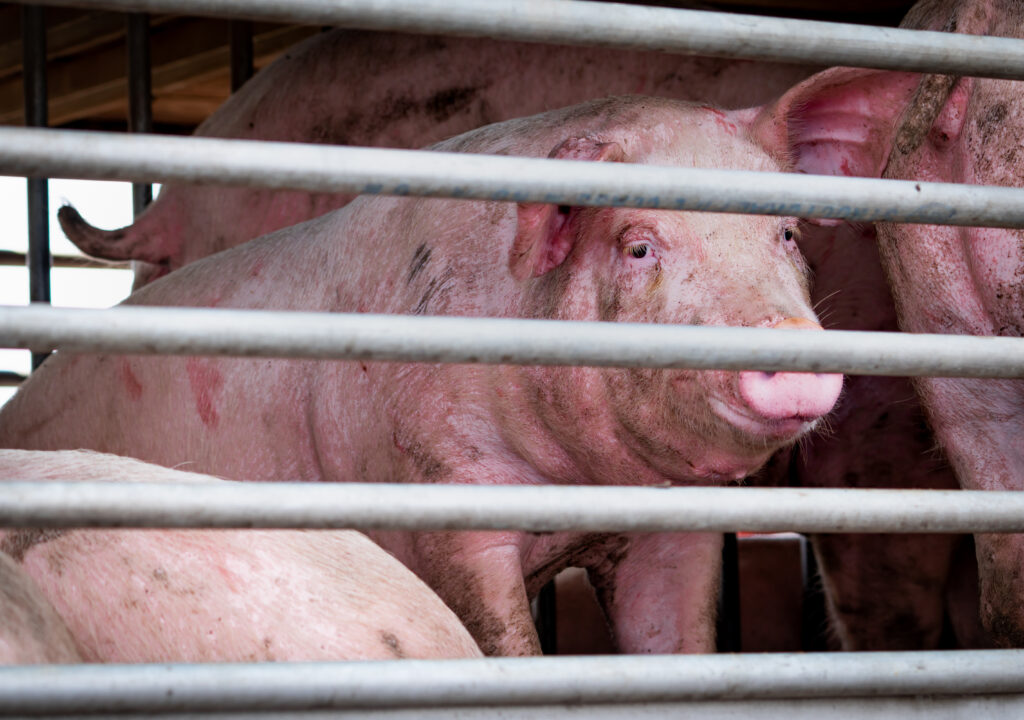In recent years, African Swine Fever (ASF) has emerged as a significant concern for the global pork industry. This highly contagious viral disease affects domestic and wild pigs, causing severe illness and often death. Understanding ASF is crucial for farmers, veterinarians, policymakers, and consumers alike. Let’s delve into the intricacies of ASF and explore how it threatens pork production worldwide.
Overview of African Swine Fever
It is a contagious viral disease, poses a severe threat to both domestic and wild pigs worldwide. The virus belongs to the Asfarviridae family and can result in high mortality rates among infected animals. ASF does not affect humans, but its impact on the swine industry is profound.
Understanding the Transmission
ASF spreads through direct contact with infected pigs or their bodily fluids. Additionally, indirect transmission can occur through contaminated objects such as clothing, vehicles, or feed. The virus can survive for extended periods in the environment, making it challenging to eradicate.
Global Impact on Pork Production
The outbreak of African swine has had devastating effects on pork production in affected regions. Losses result from mortality in infected animals, trade restrictions imposed to prevent further spread, and the costs associated with disease control measures.
Signs and Symptoms
Recognizing the signs of ASF is crucial for early detection and containment. Symptoms include high fever, loss of appetite, weakness, vomiting, diarrhea, and hemorrhages on the skin or internal organs. Prompt veterinary intervention is essential to mitigating the spread of the disease.
Diagnostic Methods
Diagnosing ASF requires laboratory testing to confirm the presence of the virus. Techniques such as PCR (Polymerase Chain Reaction) assays and serological tests are utilized for accurate detection. Early diagnosis enables swift action to prevent further transmission.
Preventive Measures
Preventing the introduction and spread of ASF requires robust biosecurity protocols on pig farms. Measures may include strict control of animal movements, disinfection procedures, and surveillance programs. Collaboration between government agencies, veterinarians, and farmers is essential for effective prevention strategies.
Treatment Options
Currently, no specific treatment exists for African swine. Management focuses on supportive care and preventing secondary infections in affected animals. Vaccines are under development, but their efficacy remains a subject of ongoing research.
Economic Implications
The economic impact of ASF extends beyond the agricultural sector, affecting related industries and economies. Reduced pork production leads to higher prices for consumers and challenges for businesses reliant on pork products. Long-term consequences include shifts in global trade patterns and food security concerns.
Environmental Considerations
ASF outbreaks can have environmental ramifications, including the disposal of infected carcasses and the potential spread of the virus to wild pig populations. Proper waste management and biosecurity measures are essential to minimize environmental contamination.
Risk Factors and Vulnerable Regions
Certain factors increase the risk of ASF transmission, including proximity to infected areas, poor biosecurity practices, and the presence of wild boar populations. Vulnerable regions must remain vigilant and implement preventive measures to prevent outbreaks.
Government Response and Policy Measures
Governments play a crucial role in combating ASF through surveillance, regulation, and public awareness campaigns. Policies may include quarantine measures, movement restrictions, and financial support for affected farmers. Collaboration between nations is essential for coordinated disease control efforts.
Consumer Awareness and Food Safety
Consumers play a role in preventing ASF by adhering to food safety guidelines and avoiding the purchase of pork products from questionable sources. Proper cooking methods destroy the ASF virus, ensuring the safety of pork for consumption.
Global Collaboration and Research Efforts
Addressing the threat of this fever requires collaboration among researchers, veterinarians, policymakers, and industry stakeholders worldwide. Ongoing research aims to develop effective vaccines, improve diagnostic tools, and enhance disease surveillance capabilities.
Frequently Asked Questions (FAQs) about African Swine Fever
What is African Swine Fever?
It is a highly contagious viral disease that affects domestic and wild pigs, causing high mortality rates in infected animals.
How is African Swine Fever transmitted?
It spreads through direct contact with infected pigs or their bodily fluids, as well as through indirect transmission via contaminated objects.
Are there any treatment options for African Swine Fever?
Currently, there are no specific treatments for African Swine Fever. Management focuses on supportive care and preventing secondary infections.
What are the signs and symptoms of African Swine Fever?
Symptoms of African Swine Fever include high fever, loss of appetite, weakness, vomiting, diarrhea, and hemorrhages on the skin or internal organs.
How can African Swine Fever be prevented?
Preventing African Swine Fever requires robust biosecurity protocols on pig farms, including strict control of animal movements and disinfection procedures.
What are the economic implications of African Swine Fever?
African Swine Fever can have significant economic consequences, including losses in pork production, higher prices for consumers, and challenges for related industries.
Conclusion
African Swine Fever poses a significant threat to global pork production, with far-reaching implications for economies, food security, and public health. Understanding the transmission, signs, and preventive measures is essential for controlling the spread of this devastating disease. By implementing stringent biosecurity measures, fostering international collaboration, and investing in research and surveillance, we can mitigate the impact of African Swine Fever and safeguard the future of the pork industry.

